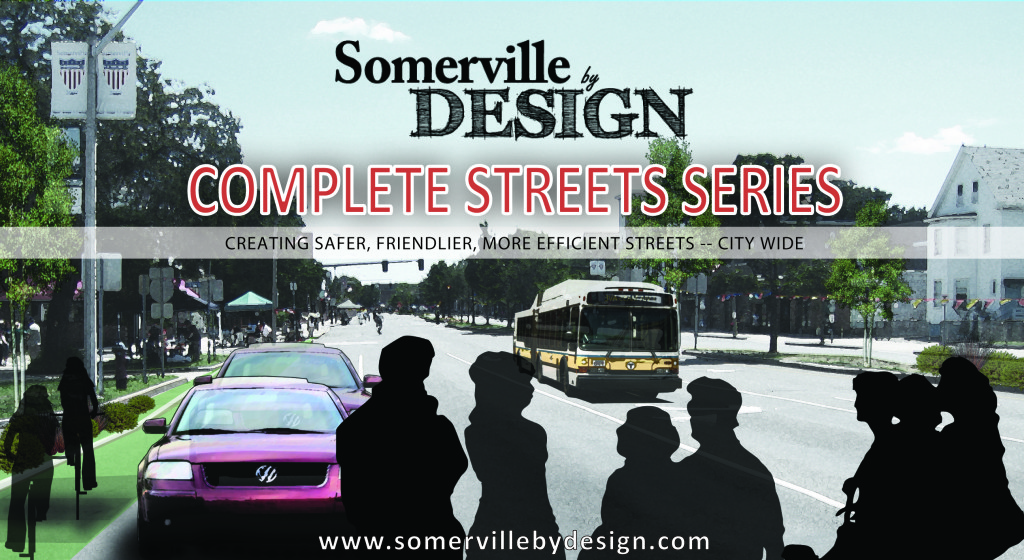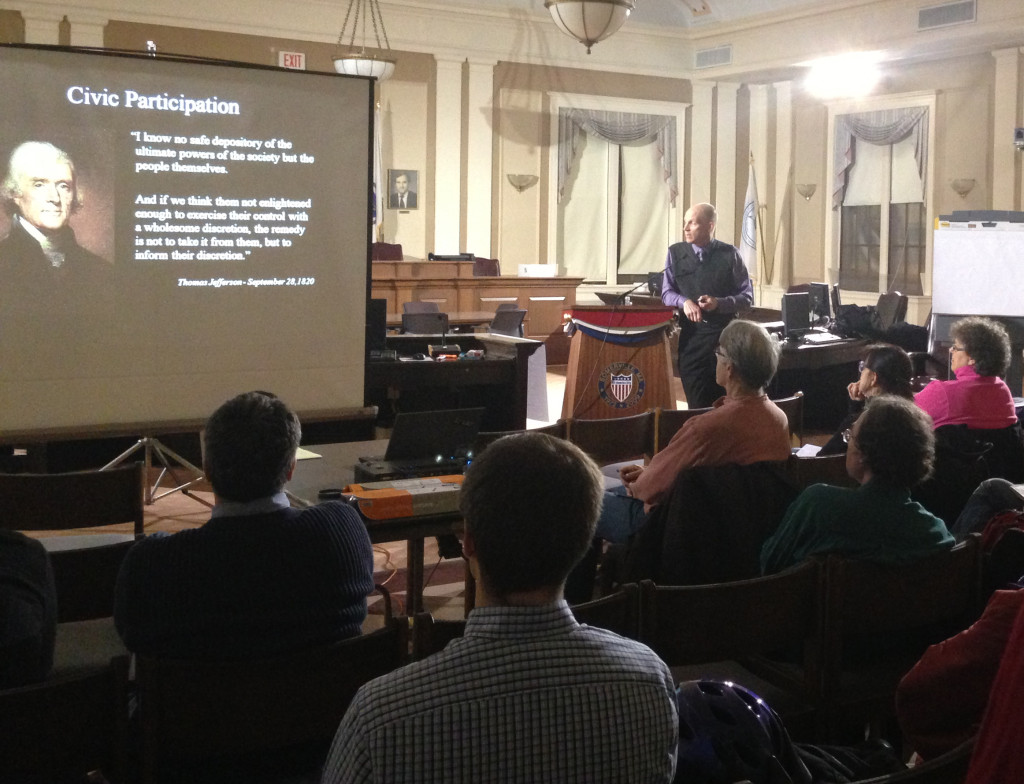
On May 8, 2014 Somerville became the first municipality in the state to pass a Complete Streets Ordinance, and the sixth community in Massachusetts to enact related policies.
Based on national and international best practices, Somerville’s ordinance codifies the City’s ongoing mission of creating and supporting safe, convenient, and healthier modes of transportation for all users by ensuring that Somerville’s streets are designed to encourage walking, biking, and public transportation use, and reduce automobile dependency and congestion. It will also enable convenient active transportation as part of daily activities, improve residents’ health by addressing a wide array of health and environmental issues, encourage walkable economic/business development, and meet the needs of all users of streets, including children, older adults and persons with disabilities.
Complete Streets is the planning, scoping, design, implementation, operation, and maintenance of roads in order to reasonably address the safety and accessibility needs of users of all ages and abilities, considering the needs of motorists, pedestrians, transit users, and bicyclists. The infrastructure integrated within Complete Streets plans provide safe travel experiences for all users while supporting and encouraging non-motorized transportation and prioritizing the needs of the most vulnerable users: children, the elderly and persons with disabilities. Such physical street design features include but are not limited to:
- Pedestrian focused elements: sidewalks; accessible curb ramps; high-visibility, raised crosswalks and tables; pedestrian signals, including leading, countdown, and or accessible signals for the blind; improvements that provide ADA (Americans with Disabilities Act) compliant accessibility; improved pedestrian access to transit stops and bus shelters; and signage.
- Bicycle focused elements: conventional and buffered bicycle lanes; cycle tracks; or shared-use lanes when lanes are not feasible; paved shoulders; bicycle parking facilities.
- Traffic calming and/or greening elements: street trees and landscaping; marked automobile lanes; curbs; modern roundabouts, traffic bumps, raised tables and crosswalks; raised medians; surface treatments such as paving blocks, textured asphalt, and concrete.
- Transit focused elements: safe and attractive public transportation stops and facilities; transit priority signalization; bus stop curb extensions to prevent obstruction by parked cars; queue jump lanes for buses, and where applicable dedicated transit lanes.
In 2013, the city kicked off the conversation on Complete Streets with Livable Transportation Expert Ian Lockwood, PE, who together with City staff ran a series of lectures and charrettes designed to get Somervillens talking about streets for everyone.

